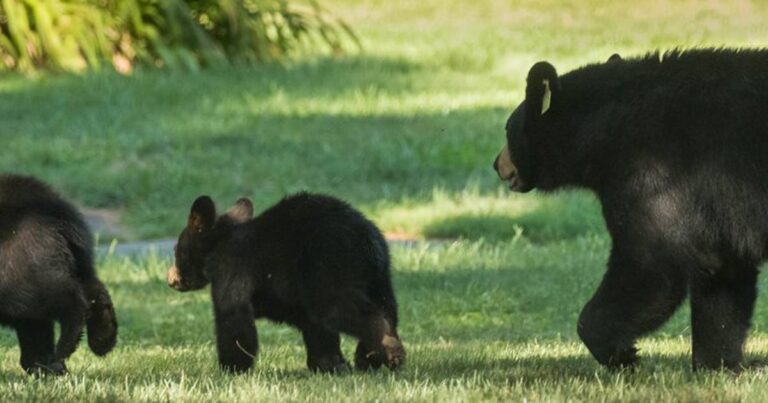
When West Hartford resident Bill Priest walked into his kitchen on Sunday, he got the shock of his life. An adult black bear was helping himself to some marshmallows and crackers Priest had left out on the kitchen counter.
“I froze,” Priest said. “I was in total shock.”
Priest, who had just returned from working in his yard, grabbed a chair to put between him and the animal. He eventually got the bear out through the front door by screaming. The bear eventually left but not before it ate an entire bag of marshmallows.
What happened next was even more alarming for Priest. The bear came back the next day and ripped a screen trying to get inside.
“It’s a little scary,” Priest said. “You kind of lock the doors and hope he doesn’t come back.”
The Department of Energy and Environmental Protection has now set up a trap in Priest’s backyard with the hope of catching the bear. If and when the bear is trapped it will be sedated, measured and tagged. DEEP also will take a small sample of its fur and pull a tooth to determine its age.
The plan, then, is to “haze” the bear — to shoot it with a paintball gun and make loud noises — essentially to recondition it and retrain it, to teach the bear to be more afraid of humans by associating a bad experience with human activity.
Priest isn’t alone. More brazen encounters with the wild animals have been reported across the state.
:quality(70)/cloudfront-us-east-1.images.arcpublishing.com/tronc/56XDP5GEI5DZ3BNZMYO3WECQRU.jpg)
Last month, a bear caught breaking into multiple homes in Canton was euthanized by DEEP. For more than a week, Canton neighbors said a mama bear with four cubs entered home after home, even making multiple break-ins into the same homes.
“Bears learn from us,” said Jason Hawley, state wildlife biologist on the bear program with DEEP. “The more bears are interacting with people, the more comfortable they become.”
Once a bear no longer fears humans it is deemed “habituated,” which makes that animal more dangerous. Bears that are habituated likely will take part in more risky behavior like breaking into houses, garages and barns or displaying aggressive behavior toward humans.
“This behavior is learned and can be both intentional and unintentional,” Hawley said. “Leaving trash outside and not locked up or having any food source around your house is conditioning a bear to be habituated.”
The black bear is an intelligent animal with keen senses of smell and hearing. It can detect the slightest scent of food, which may lead the bear to campsites and near homes. Odor from carelessly stored food and garbage can lure bears long distances.
“One of the most remarkable traits of bears is their memory,” Hawley said. “They can remember where they got food and oftentimes will go back to that spot even weeks later. It is not uncommon for a bear to go back to a home several times looking for the same food source.”

Five Things You Need To Know
Daily
We’re providing the latest coronavirus coverage in Connecticut each weekday morning.
DEEP recommends bird feeders be stored away between April and November as bird seed can attract bears. Bears have even been observed to climb up trees to get to the food source.
“There’s really no reason to have supplemental feeding for birds during summer, as they have plenty of food sources,” Hawley said. “Bird feeders are what we call unintentional feeding but can still be harmful in impacting bear behavior.”
Even more reckless, he said, is intentionally feeding a bear. Hawley said that he supports a statewide ban on feeding bears intentionally. He also would like more signage in place to not intentionally leave food out for bears at campsites or parks.
“It is harming that bear,” Hawley said. “When someone feeds a bear, they are changing their behavior to not fear humans, which means that animal ultimately will end up harming someone else or have to be put down.”
The bear population in Connecticut has been growing steadily along with the bears’ geographic range into more urban areas. DEEP estimates more than 1,200 bears across the state.
“It’s a success story,” Hawley said. “There were virtually no bears left in the state by the mid-1800s due to deforestation and hunting. They have made a very impressive rebound. But we also need to make sure we do our part to ensure their own success.”
Stephen Underwood can be reached at [email protected]